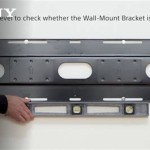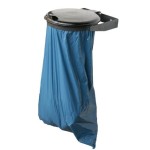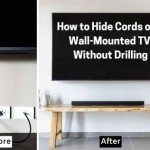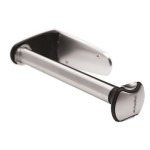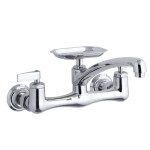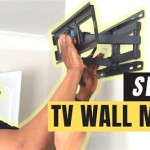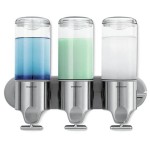Hisense Roku TV 58 Inch Wall Mount: A Comprehensive Guide
A Hisense Roku TV 58 inch model offers a compelling blend of screen size, smart features, and affordability, making it a popular choice for many households. One aspect of integrating this television into a living space is determining the most suitable mounting option. Wall mounting, in particular, provides several advantages, including space saving, improved viewing angles, and a cleaner aesthetic. This article provides a comprehensive guide to understanding the factors involved in wall mounting a Hisense Roku TV 58 inch, covering compatibility, bracket selection, installation process, and safety considerations.
Before delving into the specifics, it's crucial to acknowledge the benefits of wall mounting a television. Firstly, it frees up valuable floor space that would otherwise be occupied by a TV stand. This is especially beneficial in smaller rooms or where maximizing available space is a priority. Secondly, wall mounting allows for the positioning of the TV at an optimal viewing height, potentially improving ergonomics and reducing neck strain. Furthermore, concealing cables within the wall or using cable management solutions can create a cleaner, more organized appearance, enhancing the overall aesthetic of the room. Finally, elevating the TV prevents accidental knocks and bumps, particularly important in homes with children or pets.
Understanding VESA Compatibility
The Video Electronics Standards Association (VESA) standard is a critical aspect of wall mounting any television. VESA defines the standardized mounting interface on the back of TVs, specifying the distance between the mounting holes in millimeters. This ensures compatibility between the television and the wall mount bracket. Identifying the correct VESA pattern for a Hisense Roku TV 58 inch is a crucial first step. This information can typically be found in the television's user manual, on the manufacturer's website, or by measuring the distance between the mounting holes directly on the back of the TV. For a 58 inch Hisense Roku TV, common VESA patterns include 200x200mm, 300x200mm, or 400x200mm. It's imperative to verify the specific VESA pattern for the particular model before purchasing a wall mount.
Ignoring the VESA standard can lead to several problems. Trying to use a wall mount with an incompatible VESA pattern could result in an unstable or insecure mounting, potentially damaging the television or the wall. It can also void the TV's warranty if damage occurs due to improper mounting. Adapters are sometimes available to accommodate slight discrepancies in VESA patterns, but it's always best to choose a wall mount that directly matches the television's VESA specification. Checking the TV's specifications and the wall mount details thoroughly will prevent complications during installation.
Beyond VESA compatibility, the weight capacity of the wall mount is another critical factor. The wall mount must be capable of supporting the weight of the Hisense Roku TV 58 inch. This information is also available in the television's specifications. Exceeding the wall mount's weight capacity can lead to catastrophic failure, potentially resulting in damage or injury. Select a wall mount that has a weight capacity significantly higher than the TV's weight to provide a safety margin. Over-engineering the mount is always preferable to risking instability. Confirming both VESA compatibility and weight capacity are essential for a safe and successful wall mounting experience. Wall mounts provide maximum load rating, and it is essential to check the specific weight of the TV to that of the wall mount.
Choosing the Right Wall Mount Bracket
Once the VESA pattern and weight capacity are determined, the next step is to select the appropriate type of wall mount bracket. There are several types of wall mounts available, each offering different features and benefits. The three primary types are fixed, tilting, and full-motion mounts. Fixed mounts are the simplest and most affordable option. They hold the TV flush against the wall, providing minimal movement. These are suitable for situations where the viewing angle is already ideal and adjustments are not necessary. Tilting mounts allow the TV to be tilted vertically, which can help reduce glare or improve viewing from below. This is particularly useful when the TV is mounted high on the wall. Full-motion mounts, also known as articulating mounts, offer the greatest flexibility. They allow the TV to be extended away from the wall, swiveled horizontally, and tilted vertically, providing a wide range of viewing angles. Full-motion mounts are ideal for situations where multiple viewing positions are desired.
The choice of wall mount depends on individual needs and preferences. For a simple setup with a fixed viewing position, a fixed mount is a cost-effective solution. If some vertical adjustment is needed to minimize glare, a tilting mount is a good choice. For maximum flexibility and viewing angle adjustability, a full-motion mount is the best option. However, full-motion mounts are typically more expensive and require more complex installation. Considering the specific viewing requirements and the layout of the room will help determine the most suitable type of wall mount. Always check the manufacturer specifications of the wall mount to ensure it is compatible with the TV's size and weight.
Beyond the type of movement offered, the quality of the wall mount is also a significant consideration. A well-constructed wall mount will be made from durable materials, such as heavy-gauge steel, and will have a robust locking mechanism to secure the TV in place. A flimsy or poorly constructed wall mount can pose a safety risk. Reading online reviews and comparing different brands can help identify reputable wall mount manufacturers. It is important to choose a wall mount from a trusted brand known for quality and reliability. Furthermore, consider whether the wall mount includes integrated cable management features. These features can help conceal cables and create a cleaner appearance. Some wall mounts also include bubble levels or other tools to aid in installation.
Installation Process and Safety Considerations
The installation process for wall mounting a Hisense Roku TV 58 inch involves several steps, and it's imperative to follow the instructions carefully to ensure a secure and safe installation. The process typically begins with identifying the wall studs. Wall studs are vertical framing members that provide structural support for the wall. It's crucial to attach the wall mount to the studs to ensure it can support the weight of the TV. Using a stud finder is the easiest way to locate the studs. If a stud finder is not available, tapping lightly on the wall can help identify the studs based on the sound. The wall will sound solid when tapped directly over a stud and hollow in between studs. The distance between studs is typically 16 or 24 inches, but it's important to verify the exact spacing.
Once the studs are located, the next step is to attach the wall plate of the wall mount to the studs using lag bolts. Lag bolts are large, heavy-duty screws designed to securely fasten the wall plate to the studs. It's essential to use the correct size and type of lag bolts specified by the wall mount manufacturer. Pre-drilling pilot holes into the studs before installing the lag bolts can make the process easier and prevent the wood from splitting. Ensure the wall plate is level before tightening the lag bolts. A level can be used to verify that the wall plate is perfectly horizontal. An improperly leveled wall plate can cause the TV to be tilted, creating an undesirable viewing experience.
After the wall plate is securely attached to the studs, the next step is to attach the mounting brackets to the back of the Hisense Roku TV 58 inch. This is typically done using screws that are included with the wall mount. Make sure to use the correct size and length of screws to avoid damaging the TV. Refer to the TV's user manual for guidance on selecting the appropriate screws. Once the mounting brackets are attached to the TV, carefully lift the TV and attach it to the wall plate. Most wall mounts have a locking mechanism that secures the TV to the wall plate. Ensure the locking mechanism is properly engaged before releasing the TV. Double-checking all connections and screws is essential to ensure the TV is securely mounted.
Safety is paramount during the installation process. It is highly recommended to have at least two people to lift and mount the TV, especially for larger models. Using proper lifting techniques, such as bending the knees and keeping the back straight, can help prevent injuries. Disconnecting the TV from the power outlet before starting the installation process is crucial to avoid electrical shock. Wear safety glasses to protect the eyes from dust and debris. If running cables through the wall, ensure local building codes are followed. Obtain any necessary permits before making modifications to the wall. If unsure about any aspect of the installation process, it's best to consult a professional installer. A professional installer has the experience and expertise to ensure the TV is mounted safely and correctly. Ignoring safety precautions can lead to serious injury or damage.
After the TV is mounted, cable management is the final step. Concealing the cables can significantly improve the appearance of the installation. There are several cable management solutions available, including cable sleeves, cable channels, and in-wall cable kits. Cable sleeves are flexible tubes that can be used to bundle cables together. Cable channels are plastic conduits that attach to the wall and conceal the cables. In-wall cable kits allow cables to be run through the wall, creating a completely clean and wire-free look. Choose a cable management solution that suits the specific needs and preferences. Secure all cables to prevent them from dangling or creating a tripping hazard. Test the TV and all connected devices to ensure everything is functioning correctly. Finally, enjoy the newly wall-mounted Hisense Roku TV 58 inch.

Hisense 58 4k Uhd Led Roku S Tv Hdr R6 Series With Motion Rate 120 And Google Assistant Compatibility Wal Com

Secu Tv Wall Mount For Hisense 32 40 43 46 48 50 55 Lcd Plasma Some 60 Led 48h4c 50h4c 50h8c 55h8c Flat Panel Bg8

Hisense 58 Class 4k Uhd Lcd Roku S Tv Hdr R6 Series 58r6e3

How To Install Wall Bracket For 50 55 Hisense S Tv Using Free Wallbracket Youtube

Hisense 58 Tv Unboxing Mounting On Wall And Quick Set Up Evedansdaughter Youtube
Uhd S Tv 58a6bgtuk Hisense

Hisense 58 Class U6 Series Quantum 4k Uled Fire Tv 2024

Hisense 58 Tv Unboxing Mounting On Wall And Quick Set Up Evedansdaughter Youtube

Hisense 58 Class 4k Uhd Lcd Roku S Tv Hdr R6 Series 58r6e3

A Budget Tv For Any Room 58 Hisense Roku More

